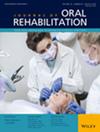The Effect of Repetitive Transcranial Magnetic Stimulation With Different Stimulation Methods on Post-Stroke Dysphagia: A Network Meta-Analysis
Abstract
Background
Multiple studies have substantiated that repetitive transcranial magnetic stimulation (rTMS) is effective in improving the swallowing function of patients with post-stroke dysphagia (PSD). Nevertheless, the choice of stimulation methods diverges, underpinned by different recovery theories. Among the distinct stimulation approaches currently in use, which one yields the most optimal therapeutic outcomes remains unexplored.
Objective
To evaluate the rehabilitation efficacy of different rTMS methods on the swallowing function of PSD patients through network meta-analysis and traditional meta-analysis.
Methods
We searched eight databases to identify articles on rTMS treatment for PSD from inception to May 5, 2024, and screened them using EndNote 20.0. The quality of articles was evaluated by Cochrane risk bias assessment criteria, and Stata 17.0 was adopted for meta-analysis. Standardised swallowing assessment (SSA), penetration aspiration scale (PAS), and dysphagia outcome and severity scale (DOSS) served as the outcome measures of the study.
Results
A total of 27 articles involving 1694 patients were selected. The studies encompassed five types of stimulation methods: high-frequency rTMS on the ipsilateral hemisphere (iHF-rTMS), low-frequency rTMS on the contralateral hemisphere (cLF-rTMS), high-frequency rTMS on the contralateral hemisphere (cHF-rTMS), high-frequency rTMS on the bilateral hemispheres (biHF-rTMS), and iHF-rTMS + cLF-rTMS (iHF-cLF-rTMS). Compared with placebo, iHF-cLF-rTMS [mean difference (MD) = −11.34, 95% confidence interval (CI): −14.57 to −8.12], biHF-rTMS (MD = −6.52, 95% CI: −8.50 to −4.55), cHF-rTMS (MD = −2.84, 95% CI: −4.37 to −1.31), and iHF-rTMS (MD = −1.89, 95% CI: −2.82 to −0.96) showed significantly better effects on improving SSA of patients with PSD. According to traditional meta-analysis, for patients with post-stroke time < 1 month, iHF-rTMS (MD = −0.558, 95% CI: −0.966 to −0.150) demonstrated a superior therapeutic outcome of SSA, while for those with post-stroke time ≥ 1 month, SSA was more significantly improved in cHF-rTMS (MD = −0.760, 95% CI: −1.193 to −0.327) and iHF-rTMS (MD = −0.428, 95% CI: −0.665 to −0.129) groups, when compared with placebo.
Conclusions
Bilateral stimulation protocols (biHF-rTMS and iHF-cLF-rTMS) confer superior efficacy over unilateral approaches. Early application of iHF-rTMS shows advantages. However, methodological limitations, including heterogeneity in stimulation parameters, small sample sizes in subgroup analyses, and insufficient long-term follow-up, warrant cautious interpretation. Future high-powered RCTs with standardised protocols are imperative to optimise rTMS-based precision rehabilitation.

 求助内容:
求助内容: 应助结果提醒方式:
应助结果提醒方式:


